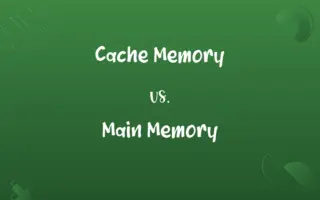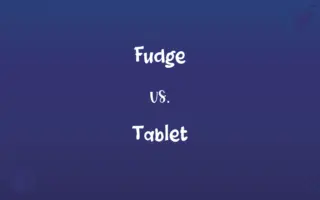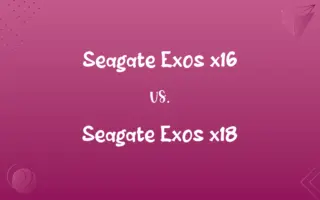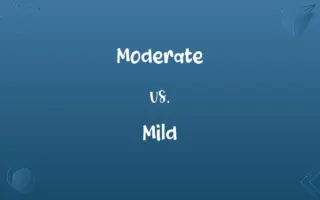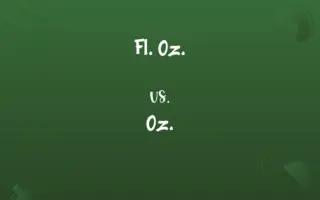Serial Transmission vs. Parallel Transmission: Know the Difference

By Shumaila Saeed & Dua Fatima || Published on May 19, 2024
Serial transmission sends data bits sequentially over a single channel, ideal for long distances due to less interference, Parallel Transmission sends multiple bits simultaneously over multiple channels, suited for short distances with higher data rates.
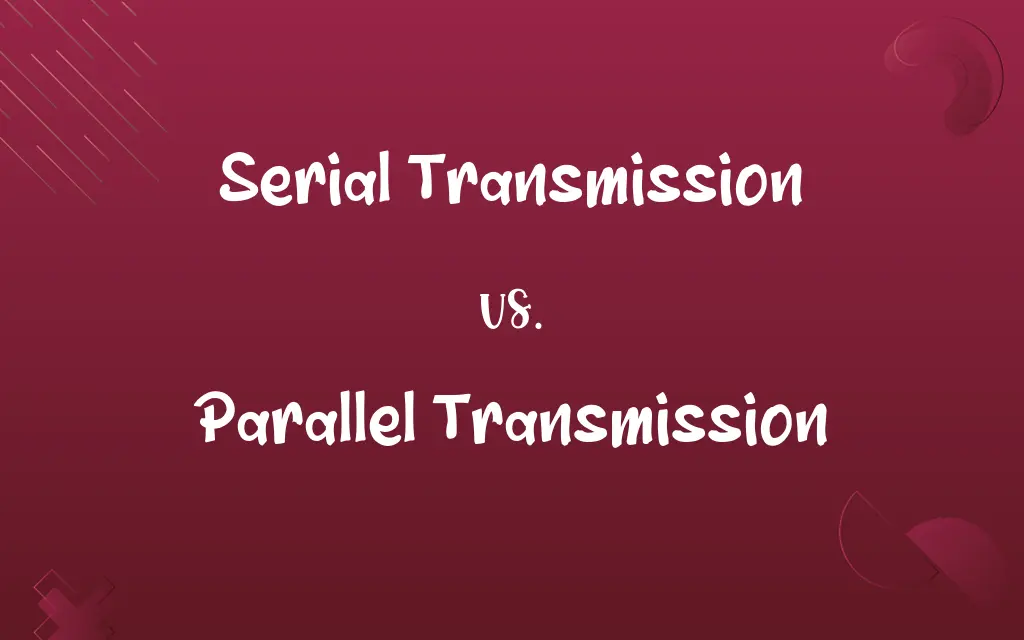
Key Differences
Serial transmission involves sending data bits one after another over a single channel or wire, making it highly efficient for long-distance communication. This method minimizes the risk of signal interference and degradation, making it preferable for data communication over networks or between distant devices. Parallel transmission, however, sends multiple bits simultaneously across multiple wires or channels, which allows for higher data transfer rates but is more susceptible to signal degradation and interference, thus limiting its effective range.
Shumaila Saeed
May 19, 2024
The simplicity of serial transmission hardware makes it cost-effective and easier to maintain. With fewer wires and simpler connectors, it's ideal for reducing physical bulk and complexity in connections, especially in modern, compact devices. Parallel transmission, by contrast, requires more complex and bulkier connectors and cables to accommodate multiple channels, which can increase costs and physical space requirements, making it less practical for devices where space is at a premium.
Shumaila Saeed
May 19, 2024
Serial transmission's resistance to electromagnetic interference (EMI) and crosstalk makes it suitable for environments with high levels of electrical noise, as it ensures more reliable data transmission over longer distances. Parallel transmission's multiple channels can suffer from timing issues, known as skew, where bits arrive at slightly different times due to varying lengths of wires or external interference, leading to errors in data interpretation.
Dua Fatima
May 19, 2024
In terms of speed, parallel transmission traditionally offered faster data rates because multiple bits were transmitted simultaneously. However, advancements in serial transmission technologies have significantly increased its speeds, making it competitive with or even superior to parallel transmission in many applications. Technologies like USB and SATA for serial transmission provide high-speed data transfers while maintaining signal integrity over longer distances.
Dua Fatima
May 19, 2024
Overall, the choice between serial and parallel transmission depends on the specific requirements of the application, including distance, speed, cost, and environmental conditions. Serial transmission is generally preferred for most modern communication needs due to its reliability, simplicity, and efficiency over long distances.
Shumaila Saeed
May 19, 2024
ADVERTISEMENT
Comparison Chart
Data Flow
Sequentially, bit by bit over a single channel
Simultaneously, multiple bits over multiple channels
Hifza Nasir
May 19, 2024
Distance Suitability
Long distances, with minimal interference
Short distances, prone to interference and signal degradation
Shumaila Saeed
May 19, 2024
Speed
Initially slower, but modern standards are highly efficient
Traditionally faster due to simultaneous transmission
Shumaila Saeed
May 19, 2024
Hardware Complexity
Less complex, requiring fewer wires and connectors
More complex, requiring multiple wires and connectors for each bit
Dua Fatima
May 19, 2024
Susceptibility to EMI and Crosstalk
Lower, due to single-channel transmission
Higher, due to multiple channels and closer wire proximity
Dua Fatima
May 19, 2024
ADVERTISEMENT
Applications
Ideal for network communication, external device connections (USB, SATA)
Used in internal connections within devices, such as computer buses
Dua Fatima
May 19, 2024
Cost and Maintenance
Generally lower cost and easier maintenance
Higher cost and more complex maintenance due to more components
Shumaila Saeed
May 19, 2024
Serial Transmission and Parallel Transmission Definitions
Serial Transmission
Serial interfaces support high-speed data transfer with less interference.
SATA interfaces for hard drives utilize serial transmission.
Shumaila Saeed
Feb 26, 2024
Parallel Transmission
Requires more wires, increasing the cable size and cost.
Parallel cables are bulkier than their serial counterparts.
Shumaila Saeed
Feb 26, 2024
Serial Transmission
Serial transmission sends data one bit at a time, ideal for long-distance communication.
USB cables use serial transmission to connect devices.
Shumaila Saeed
Feb 26, 2024
ADVERTISEMENT
Parallel Transmission
Historically used in computer connections, now being replaced by serial transmission.
Parallel ATA (PATA) has been largely replaced by Serial ATA (SATA) in computers.
Shumaila Saeed
Feb 26, 2024
Serial Transmission
It requires minimal wiring, reducing cost and complexity.
Serial cables are thinner and more flexible than parallel cables.
Dua Fatima
Feb 26, 2024
Parallel Transmission
It allows for high-speed data transfer over short distances.
Internal computer buses often use parallel transmission.
Dua Fatima
Feb 26, 2024
Serial Transmission
Efficient in power and bandwidth usage, suitable for wireless communications.
Bluetooth employs serial transmission for data exchange.
Dua Fatima
Feb 26, 2024
Parallel Transmission
Prone to signal degradation and timing issues over longer distances.
In high-speed parallel interfaces, slight differences in wire length can cause data errors.
Hifza Nasir
Feb 26, 2024
Serial Transmission
Adaptable to various communication standards, ensuring broad compatibility.
Serial ports can communicate with a variety of external devices.
Shumaila Saeed
Feb 26, 2024
Parallel Transmission
Parallel transmission sends multiple data bits simultaneously across different channels.
Older printers used parallel ports for faster data transfer.
Dua Fatima
Feb 26, 2024
Repeatedly Asked Queries
What is parallel transmission?
Parallel transmission sends multiple data bits simultaneously across several channels, ideal for short-distance, high-speed transfers.
Shumaila Saeed
May 19, 2024
Why is serial transmission considered more reliable than parallel?
It is less prone to signal interference and crosstalk, making it more reliable over longer distances.
Shumaila Saeed
May 19, 2024
Can parallel transmission be faster than serial?
Yes, over short distances, parallel transmission can achieve higher data transfer rates due to simultaneous bit transfers.
Dua Fatima
May 19, 2024
Are parallel ports still used today?
While less common, parallel ports may still be found in certain legacy systems and specialized equipment.
Dua Fatima
May 19, 2024
What is serial transmission?
Serial transmission sends data one bit at a time over a single channel, often used for long-distance communications.
Dua Fatima
May 19, 2024
What is crosstalk in the context of data transmission?
Crosstalk refers to unwanted interference caused by adjacent wires or channels affecting the signal.
Shumaila Saeed
May 19, 2024
What measures are taken to prevent errors in parallel transmission?
Error-detection and correction codes, along with careful cable design, are used to mitigate errors in parallel transmission.
Hifza Nasir
May 19, 2024
Why has serial transmission become more popular than parallel?
Advances in technology have improved serial speeds and reliability, making it suitable for a wider range of applications without the drawbacks of parallel transmission.
Shumaila Saeed
May 19, 2024
What are examples of serial transmission devices?
USB, HDMI, and network cables are common examples of devices using serial transmission.
Shumaila Saeed
May 19, 2024
How do serial and parallel transmissions compare in terms of cost?
Serial transmission typically involves lower cost and complexity, requiring fewer wires and connectors than parallel transmission.
Dua Fatima
May 19, 2024
Share this page
Link for your blog / website
HTML
Link to share via messenger
About Author
Written by
Shumaila SaeedShumaila Saeed, an expert content creator with 6 years of experience, specializes in distilling complex topics into easily digestible comparisons, shining a light on the nuances that both inform and educate readers with clarity and accuracy.
Co-written by
Dua Fatima